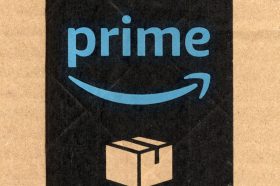Resources - Blog
Drive More Traffic to Your Store on Prime Day With These Tips

Stay on top of the latest e-commerce and marketplace trends.
When it comes to Prime Day, it’s crucial to keep in mind that every third-party Amazon operation is unique and it’s not going to be one-size-fits-all when it comes to growth and optimization strategies.
Sellers have to customize their own business goals according to their business model and needs, should have SKU-specific strategies as well as pricing strategies that apply to specific categories of their catalog, and should create their own approaches to preparing for a high-traffic event like Prime Day.
However, there are several best practices that sellers can take into consideration in order to ensure that the shopping holiday is advantageous for their Amazon store and they are creating a convenient shopping experience for the customer. In our latest webinar, Feedvisor’s senior account executive Jesse Hom walked us through the importance of making sure your online business is running smoothly on a day with a surge in traffic like Prime Day.
Gearing up for Success
1. Optimize your product listings.
With intricate details of your store under a microscope due to the increased traffic of Prime Day, it’s vital for your product listings to be in tip-top shape in order to pick up well-deserved extra profits that the holiday is capable of driving. Whether your end goal is capitalizing on the sales lift or liquidating inventory, key items should have fresh, high-resolution product images from several different angles (with the product in use or worn to resonate with the customer) that adhere to Amazon’s image standards.
For title tags, longer and more detailed product descriptions are best. For selling points, it’s important to include clear, compelling copy that answers any questions the customer may have about the product.
2. Incorporate advertising into your agenda.
Prepare your advertising budget in a timely manner so that you can take advantage of ad campaigns such as Headline Search Ads or Sponsored Product Ads, which are capable of driving incremental traffic and brand awareness to your store both on Prime Day and beyond.
You can also diversify your ad spend by exploring advertising channels that may have less competition. Lastly, know that the piqued interest can extend past Prime Day if you lengthen your campaigns and focus on the time period (whether days or weeks make the most sense for your business) immediately following the holiday, positioning your store to stay top of mind for the buyer.
3. Understand the value of staff and business automation.
On a software level, preparing for Prime Day can be a much simpler process with automated repricing software and revenue intelligence reporting that provides data-driven insights such as which product to replenish, at what volume, and at what time. It’s important that there’s a cohesive dialogue between your business systems in order to run the most efficient Prime Day operation.
It’s important to know your competitive market landscape, which items have the most competition on the marketplace, and which fulfillment method makes the most sense for your business. With regard to personnel, it’s important to make sure that you’re properly staffed to cover any spikes in sales volume.
Implementing a Pricing Strategy Is Key
When it comes to Prime Day and other high-traffic events like the Q4 holiday season, Black Friday, and Cyber Monday, it’s imperative that you know how to leverage the holiday against your inventory.
In order to make the most of your product assortment throughout the year, a SKU-by-SKU strategy will give each item the attention it deserves so that your entire catalog, even non-Prime Day items, will be fulfillable. Your pricing strategy should match the strategy you set for inventory.
Additionally, it’s important that you’re prepared to capture increased demand through FBM. Whether you are involved in Prime Day to participate in lightning deals or are trying to become more competitive and are monitoring your pricing via AI-powered software, it’s important to plan ahead to make sure that you have inventory that can last beyond the conclusion of the holiday to avoid stockouts. Flexibility will also be key – with increased traffic, you will likely need to reevaluate your pricing strategy on an ongoing basis.
Through Feedvisor’s algo-commerce solution – using big data and machine-learning algorithms to help retailers make more impactful business decisions – data is carefully analyzed so that sellers can take strategic action surrounding their pricing, positioning in the competitive landscape, and performance. The value that the customer success team provides is unmatched, providing the proper tools to enable sellers to maximize their Amazon potential whenever possible.

